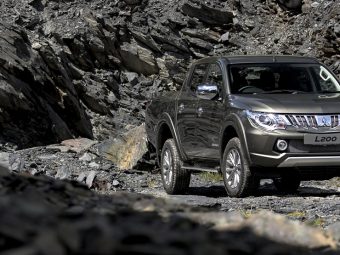It’s a big ugly beast is the sixth generation BMW 7 Series, about as elegant as a grandfather clock is to an Apple iWatch. I once owned an E38, the third generation, and in my opinion, it remains the best-looking version to date. But it was no driving machine, it felt heavy and ponderous and after a certain amount of mileage, the rear suspension developed a high pitched whine. The Jaguar XJ (X308) was a far better driver’s car, but this is 2020 and this is the updated BMW 7 Series. Time, technology, and the perception of luxury have moved on considerably since the mid-2000s. And so has the elegance of the E38, but not for the better. Mandatory crash regulations and safety systems have slowly bloated the exterior styling. The 7 Series has evolved to become bigger and wider as a result. And that front grille… hopefully a trend that falls out of favor, like a flowery wallpapered feature wall.

That larger grille is almost comically oversized. However, it is purposely aimed at the Chinese market where cars with big imposing grilles are seen as a status symbol, a sign of personal success. And to accommodate the new grille BMW had to increase the height of the front bonnet. Then there is the rear tailgate area which looks like an iceberg, presumably it’s been designed to ease ingress and egress. Which is all well and good but style should always be the first consideration over a consumer focus group test checklist. BMW introduced a raft of mid-cycle updates for 2019, new paint finishes, alloy wheels, and optimized aerodynamics.
Mild-hybrid equipped engines are now included for the range of six-cylinder diesel engines and for the 6, 8 and 12 cylinder petrol engines. These engines are available in various states of power, starting from 265 bhp for the entry-level 730d and up to 585bhp for the V12 M760i. If you have a desire to temporarily save the world then BMW has even thought of a solution for that midset with the 286bhp 745e Hybrid. Also new are revised exterior details such as LED headlights cluster designs, tail-lights, new front, and rear bumper styling, and a lightly upgraded interior with new tech.
And starting with the interior, it offers a seriously well-appointed cabin, with plenty of room all around. Premium luxury upfront and no expense premium luxury at the rear. Indeed there is so much room that the 7 Series is fitted with front comfort seats as standard, as used in the X7 SUV. With the march to digital infotainment systems, interior designs have become minimalist. Physical buttons are disappearing, touch-sensitive buttons are becoming the norm. The 7 Series mixes both old and new, tactile vs touch-sensitive. All in all it makes for a much more modern look and feel.
However, this minimalist approach now makes the center console air vents look unsightly and out of place. Why can they not be moved to the top of the dashboard, out of sight, or slimmed down to a narrow opening? I rarely if ever use center-mounted air vents often switching the heating to the footwells during winter months.
Many motoring journalists have marveled at how close the 5 Series is to the 7 Series in terms of luxury. Don’t believe the hype because there is a definitive step up in quality from the 5 Series. When you step into the cabin of a 7 Series you can feel, sense, and touch the differences. More leather, better quality leather, actual real natural wood the usual luxury suspects not available in the 5 Series. And of course, the build quality is second to none and even makes an S Class feel flimsy by comparison.
The centrally mounted 12.3-inch iDrive infotainment system is complemented by the 10.2-inch digital driver’s display, both are standard on all 7 Series variants. The drivers display functions well enough but has limited functionality and could be clearer and brighter. As a comparison, the Virtual Cockpit from Audi is one of the best in the business. The centrally-mounted 12.3-inch infotainment display is, however, the best system you can get. The user interface is pleasing to the eye and simple to use. It does everything a modern infotainment system should be doing.
Although the gesture controls are a good idea, in theory, the hardware is a few generations away from making gesture control truly useable. One area where car manufacturers routinely fail is OEM voice control. For example, the latest voice control software is now so good that it allows you to activate and/or control the temperature of the heating system. It’s OK, but can often be hard of hearing. While the “Hey BMW” voice assistant is far better than previous attempts, it is still inferior to Google Voice Assistant or Siri.
The use of carbon fibre in parts of the chassis reduces the overall weight by 130kg. But this is no lightweight premium luxury sedan, it still weighs just over two tonnes. The 7 Series is offered in a range of straight six-cylinder diesel and petrol powerplants. The 750i on test is equipped with a V8 twin-turbo which smoothly and rather discreetly delivers 530bhp of on-demand performance, often faster than initial expectations. You can feel the engineering excellence although you won’t hear it because it’s so damn quiet from behind the wheel.. And that’s exactly what you want in a premium luxury sedan. And it isn’t too bad on the jungle juice, I managed to achieve 31.23mpg on a combined cycle, impressive.
Do not expect a car weighing two tonnes to be a handling dream machine and the 7 Series absolutely isn’t. It’s is designed to be the perfect motorway cruiser, and, it very much is. Adaptive air suspension is standard on all models which allow for a super comfortable ride on any surface be it pot-holed or ultra-smooth. Various driving modes alter the attitude of the car, I personally leave it “slouch mode” my term for comfort mode. And the comfort is further enhanced by the 8-speed transmission which has Ninja-like reflexes when required and conversely shifts so smoothly that you start believing there actually is a god.
In urban settings, over low to medium bumps, the ride is super relaxing, even with 20-inch low profile tyres the adaptive air suspension is like Nike Air Max on all four corners. On twisty country roads, the handling is OK for such a big car, it corners modestly flat and 4-wheel drive relays reassuring levels of grip and security. But if you are expecting a handling revelation from the 7 Series then you are truly better off reading the actual bible. If you want improved low-speed London Black Cab like manuerability, BMW has you covered with the optional rear-wheel steering.
Prices for the BMW 7 Series begin from £70,620 for the 730d, add another £3,000 for X-Drive. M Sport editions add another couple of £k on top. The petrol 740i starts at £73,615, the 750i xDrive M Sport on test starts from £90,205 before options. And if you want options then you could easily trip into the £100k barrier. However, if I am intent on spending over £100k on a luxury car then I wouldn’t go for the 7 Series or the S Class. For a little extra (relatively speaking) I would opt for the Bentley Flying Spur, it looks far better than the BMW 7 Series and it is a properly proper luxury car. The BMW is a step down more Premium Luxury which in today’s market is about as exclusive as a Genesis G70.















